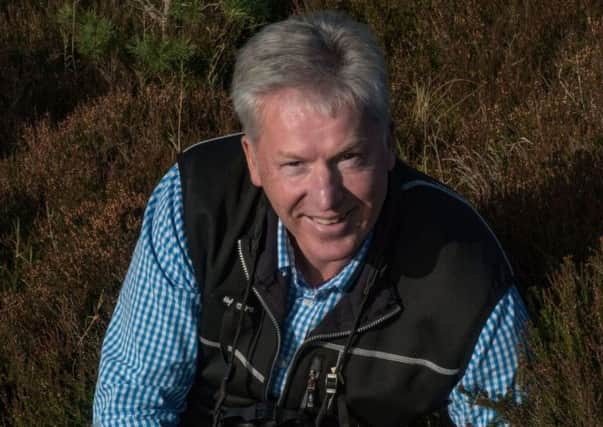Thomas MacDonell: Making land pay isn't all about profit '“ natural beauty has its own value


Furthermore, the actions needed to achieve such a goal are often met with scepticism or worse, hostility.
For Scotland’s estates and great swathes of our majestic countryside, the game changer in terms of their environmental protection was Natura 2000. This ecological network of protected areas provided the rigour needed for the EU’s Habitats Directive, under which Special Areas of Conservation were established, providing teeth for local environmental laws, forcing many landowners to change their mindset towards their land holdings and how they were managed.
Advertisement
Hide AdAdvertisement
Hide AdFor some estates too, there were additional cost pressures. Putting in place new land management expertise and implementing habitat monitoring procedures was entirely new, not necessarily straightforward and often unwanted.
Many estates had previously diversified to try to make the land ‘pay’, with decisions commonly based around maximising returns from existing government subsidy frameworks, such as those for renewable energy.
Even then, most estates lose money – as do ours, for the time being at least. Sometimes, however, when onlookers focus on profit and loss as prime motivators, they find it is hard to credit the fact that there are those who buy land simply because nature is their passion and natural beauty has its own value.
The introduction of Natura 2000, in fact, opened the way for new types of owners to step forward, step up and start building new businesses around the natural capital.
Anders Holch Povlsen bought Glenfeshie in the Cairngorms in 2006. Since then he has continued to buy designated sites where there is little obvious commercial opportunity, along with the lands connecting them to create the ability to approach environmental rehabilitation on a landscape scale.
His vision, which is being implemented by Wildland Limited, is for developing and nurturing Scotland’s most special habitats and protecting its most valuable landscapes.
At Glenfeshie, a decade after taking charge, deer numbers have been reduced to levels that are more in balance with the land’s capacity to support them, and new trees emerge every year. Instead of being browsed, they are allowed to gain a foothold, with new Scots pine, birch and juniper thriving.
Hopefully soon, through the Cairngorms Connect project, Glenfeshie’s expanding ecosystem will eventually link with Abernethy Forest, where the RSPB has successfully created an area where rare birds are now returning in ever greater numbers.
Advertisement
Hide AdAdvertisement
Hide AdBut conservation capital simply isn’t sustainable unless it involves people and delivers the health, well-being and economic benefits that the Scottish Government quite rightly aspires to in its policy ambitions. Mr Povlsen’s vision is about people and place too. For Wildland Limited, conservation and landscape restoration go hand in hand with investment in a high value, low impact tourism business that seeks to draw in new vitality to the rural economy, along with the visitors who are a growing source of income in the Highlands.
Creating and protecting places for people to visit and stay yields economic and employment opportunities in areas that otherwise lack such prospects.
We are creating not only direct employment – gardeners, chefs, conservationists and hospitality staff – but also opportunities for those who seek a livelihood in engaging with what we do through a growing supply chain. The aim is to be part of a strong, diverse and sustainable economy in Scotland’s remote and rural communities.
Glenfeshie still provides field sports, but it also welcomes walkers and adventurers who enjoy the landscape and our well-maintained bothy.
Our estate’s team actively engages with rural skills training and a wider range of outdoor pursuits, while the restoration of nearby Killiehuntly Farm House and steadings as high-end accommodation is encouraging new visitors to enjoy the wider area.
We’re replicating that balance of conservation sustained by economic investment elsewhere. Our Wildland North Coast estates are the focus of a far reaching investment programme that is creating opportunities for visitors to stay and enjoy iconic landscapes around Ben Loyal and Ben Hope.
Commercial success is neither a short-term aspiration, nor even a reality, on many estates, and with 396 Natura 2000 sites in Scotland (approximately 15 per cent of its land surface) the motivation of many estate owners has to be something more than simple profit.
At the same time, neither can it be about delivering conservation objectives at the expense of financial opportunities for local people.
To build a future around Scotland’s natural capital has to be a vision that balances these drivers over the long term.
Thomas MacDonell, director of conservation, Wildland Limited.